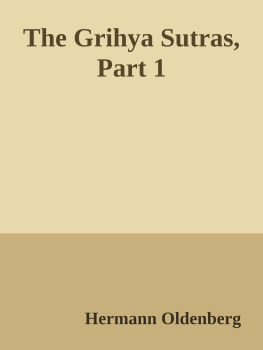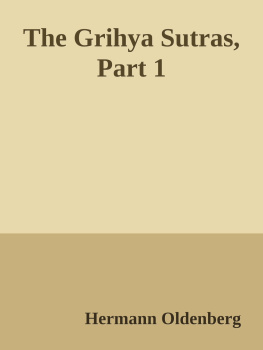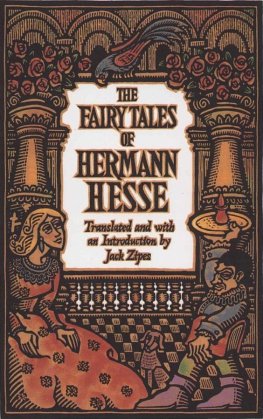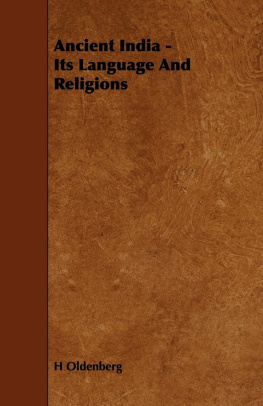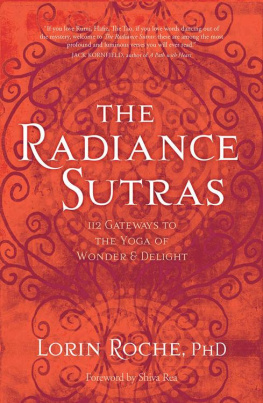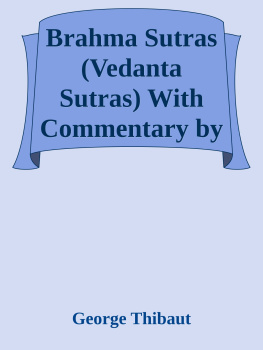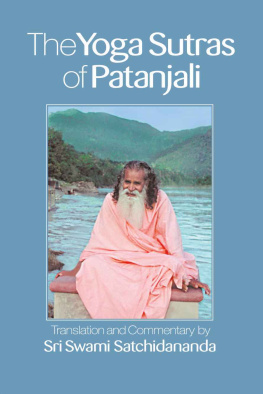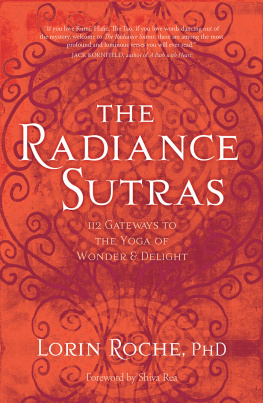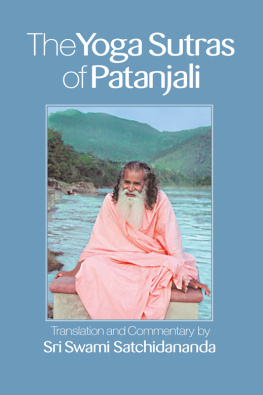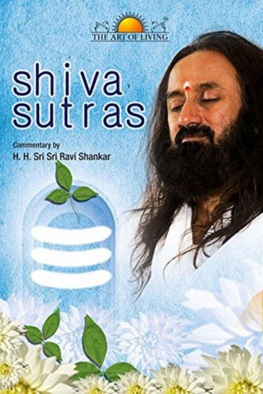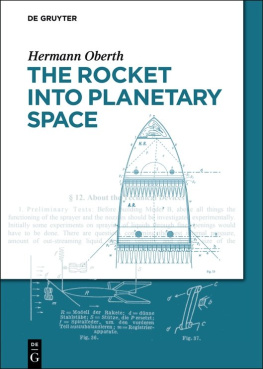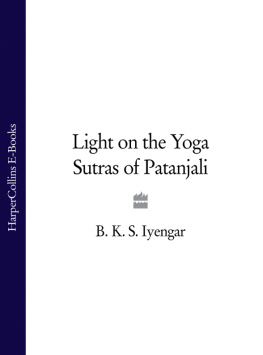Hermann Oldenberg - The Grihya Sutras, Part 1
Here you can read online Hermann Oldenberg - The Grihya Sutras, Part 1 full text of the book (entire story) in english for free. Download pdf and epub, get meaning, cover and reviews about this ebook. genre: Children. Description of the work, (preface) as well as reviews are available. Best literature library LitArk.com created for fans of good reading and offers a wide selection of genres:
Romance novel
Science fiction
Adventure
Detective
Science
History
Home and family
Prose
Art
Politics
Computer
Non-fiction
Religion
Business
Children
Humor
Choose a favorite category and find really read worthwhile books. Enjoy immersion in the world of imagination, feel the emotions of the characters or learn something new for yourself, make an fascinating discovery.
- Book:The Grihya Sutras, Part 1
- Author:
- Genre:
- Rating:5 / 5
- Favourites:Add to favourites
- Your mark:
- 100
- 1
- 2
- 3
- 4
- 5
The Grihya Sutras, Part 1: summary, description and annotation
We offer to read an annotation, description, summary or preface (depends on what the author of the book "The Grihya Sutras, Part 1" wrote himself). If you haven't found the necessary information about the book — write in the comments, we will try to find it.
The Grihya Sutras, Part 1 — read online for free the complete book (whole text) full work
Below is the text of the book, divided by pages. System saving the place of the last page read, allows you to conveniently read the book "The Grihya Sutras, Part 1" online for free, without having to search again every time where you left off. Put a bookmark, and you can go to the page where you finished reading at any time.
Font size:
Interval:
Bookmark:

THE
GRIHYA-SUTRAS
RULES OF VEDIC DOMESTIC CEREMONIES
TRANSLATED BY
HERMANN OLDENBERG
ASVALAYANA-GRIHYA-SUTRA
PARASKARA-GRIHYA-SUTRA
KHADIRA-GRIHYA-SUTRA
Clarendon: Oxford University Press
[1886]
Scanned at sacred-texts.com, September 2007. Proofed and formatted by John Bruno Hare. This text is in the public domain in the United States because it was published prior to January 1st, 1923. These files may be used for any non-commercial purpose, provided this notice of attribution is left intact in all copies.
CONTENTS.
SANKHAYANA-GRIHYA-SUTRA.
PAGE
TRANSLATION
ASVALAYANA-GRIHYA-SUTRA.
TRANSLATION
PARASKARA-GRIHYA-SUTRA.
TRANSLATION
KHADIRA-GRIHYA-SUTRA.
TRANSLATION
Transliteration of Oriental Alphabets adopted for the Translations of the Sacred Books of the East
*** The Second Volume will contain a GENERAL INTRODUCTION to the Grihya-Sutras.
SANKHAYANA-GRIHYA-SUTRA.
[p. 2] [p. 3]
SANKHAYANA-GRIHYA-SUTRA.
THE Grihya-sutra ascribed to Sankhayana, which has been edited and translated into German by myself in the XVth volume of the Indische Studien, is based on the first of the four Vedas, the Rigveda in the Bashkala recension [*1], and among the Brahmana texts, on the Kaushitaka. Its reputed author, whom we ordinarily find called by his family name, Sankhayana, had the proper name Suyagna. This we may infer from the lists of Vedic teachers given in different Grihya texts where they describe the Tarpana ceremony. Though in these lists the order of names varies very much, yet the two names Suyagna and Sankhayana are constantly placed side by side, so that this fact alone would render it probable that they belonged to the same person. Thus we read in the Sankhayana-Grihya IV, 10 = VI, 1:
Kaholam Kaushitakim, Mahakaushitakim, Suyagnam Sankhayanam, Asvalayanam, Aitareyam, Mahaitareyam.
Here we have grouped together the two Brahmana authors (with the fictitious doubles, the great Kaushitaki, the great Aitareya) and the two corresponding Sutra authors belonging to the two chief branches of the Rigveda literature; first comes one Brahmana author (for Kahola Kaushitaki is one person) with the Sutra author connected with him, then the second Sutra author and the corresponding Brahmana teacher.
In the Sambavya-Grihya (Indische Studien, XV, 154) the corresponding passage runs thus:
Gargya-Gautama- Sakalya-Babhravya- Mandattavya
[paragraph continues] [sic]- Mandukeyah Suyagna-Samkhyayana- Gatukarnyeyah [sic] Paimga [sic]- Sambavy-Aitareyah.
The same Grihya still more explicitly bears witness to the name of Suyagna Sankhayana, by adding at the end of the list, from which these names are quoted the following words: Suyagna Sakhayanas [sic] tri[pya]tu, i.e. May Suyagna Sankhayana satiate himself (with the water offering).
In the Asvalayana-Grihya III, 4, we read:
Kaholam Kaushitakam Mahakaushitakam Paingyam Mahapaingyam Suyagnam Sankhayanam Aitareyam Mahaitareyam.
We may also quote here a Karika given by Narayana [*1] in his great commentary on the Sankhayana-Grihya (I, 1, 10):
Atraranipradanam yad adhvaryuh kurute kvakit [*2]
matam tan na Suyagnasya, mathitam so tra nekkhati.
It would perhaps be hazardous to claim for the author of this Karika the authority of an independent witness, for very likely he may have derived his knowledge from the lists of teachers which we have quoted before. But at all events the concordance of the three Grihya texts furnishes a proof which, I think, cannot be set aside by another testimony which we must mention now. At the end of the Kaushitaki-Aranyaka (Adhyaya 15) we find a Vamsa or list of the teachers by whom the knowledge contained in that Aranyaka is supposed to have been handed down. The opening words of this list run thus:
Om! Now follows the Vamsa. Adoration to the Brahman! Adoration to the teachers! We have learnt (this text) from Gunakhya Sankhayana, Gunakhya Sankhayana from Kahola Kaushitaki, Kahola Kaushitaki from Uddalaka Aruni, &c:
It is a very natural supposition that the author of this list intended to begin with the name of the Doctor eponymus, if we may say so, of the Sutras of his school, and then to proceed to name the Doctor eponymus of the Brahmanas, and after him the more ancient teachers and
sages. But whether the author of this passage really supposed this Gunakhya Sankhayana to be the author of the Sankhayana-sutras, or not, we shall be justified in following rather the unanimous statements of the texts previously quoted, and in accepting in accordance with them, as the full name of our Sutrakara, the name Suyagna Sankhayana.
The Grihya-sutra which has been here translated presupposes, as all Grihya-sutras do, the existence of the Srauta-sutra, with which it is intimately connected and which is referred to in the Grihya in several instances [*1].
Here the question arises whether the Grihya-sutra was composed by the same author to whom the authorship of the Srauta-sutra belongs, so that the two texts form together, and would, in the conception of their author, be intended to form, one great body of Sutras, or, on the other hand, whether the Grihya-sutra is a later addition to the Srauta-sutra. On this question I have ventured, in the preface to my German edition of Sankhayana [*2], to offer a few remarks which, however, I feel bound to say do not seem to myself quite decisive. I there pointed out that the Grihya-sutra contains a few aphorisms which we should rather expect would have found their place in the Srauta-sutra, if the two texts were composed by the same author and on a common plan [*3]. But, apart from the possibility that in a work of such considerable extent as that collection of Sutras would be, such trifling incongruences or irregularities might very easily escape the attention even of a very careful author, there is still another objection that may be urged against the inference drawn by me from such passages. It can be shown [*4] that the Grihya texts which we possess are based to some extent on one common original, from which they have taken verbatim, or nearly verbatim, a certain number of aphorisms. Thus if we were to suppose that Sankhayana,
or whosoever the author of this Grihya-sutra may have been, found the aphorisms on which I once based my argument, in that original text, this would explain the occurrence of those passages in a portion of the great body of Sutras different from that in which we should expect to meet them. Now several of the passages in question recur identically in other Grihya texts, so that we may infer indeed that they are taken from that lost original, and we have no means to judge whether the other similar passages are not taken from it also. I believe, therefore, that the opinion which I once pronounced regarding the relation in which the two Sutra texts stand to each other, cannot be vindicated, and that it is better to leave that question unanswered until perhaps further discoveries throw a new light on it.
For the reconstruction of the correct text of the Sankhayana-Grihya, and occasionally also for its interpretation, it is of considerable importance that we possess, besides the Devanagari MSS. of the text and of the commentaries, a South Indian MS. written in the Grantha character (MS. Whish 78 in the library of the Royal Asiatic Society, London) which contains a Grihya based on that of Sankhayana and following it, during the greater part of the work, nearly word for word [*1]. It is designated in the MS., at the end of the single Adhyayas, as Kaushitaka-Grihya. It therefore professes to follow the teaching of the same Brahmana which is adhered to also by the Sutra school of Sankhayana. A metrical commentary, which in the MS. follows after the text, names in its opening Sloka a teacher Sambavya as the author of this Sutra. The Sloka runs thus:
Font size:
Interval:
Bookmark:
Similar books «The Grihya Sutras, Part 1»
Look at similar books to The Grihya Sutras, Part 1. We have selected literature similar in name and meaning in the hope of providing readers with more options to find new, interesting, not yet read works.
Discussion, reviews of the book The Grihya Sutras, Part 1 and just readers' own opinions. Leave your comments, write what you think about the work, its meaning or the main characters. Specify what exactly you liked and what you didn't like, and why you think so.

